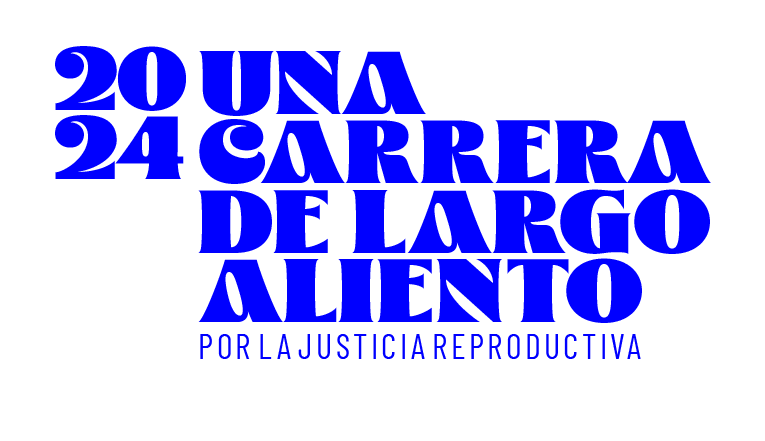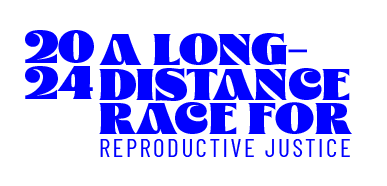
New to the podium
innovation and new approaches
Just as breakdancing and skateboarding renewed the Olympic spirit, GIRE broke new ground to reach more people with relevant and accessible information.
INSPIRED BY THE INCLUSION of new sports in the Olympics, such as breakdancing and skateboarding, at GIRE we explored innovative ways to amplify reproductive justice. We created resources that provide new perspectives on reproductive health; we pivoted to other platforms and used them strategically; and we created learning spaces to share relevant information and powerful narratives around reproductive rights with allies from diverse fields.
 Abortion in Paper Folding
Abortion in Paper Folding
![]() A feminist library on abortion in Mexico. It aims to provide reliable information to decision-makers, healthcare workers, journalists, women and people with childbearing potential. The content is constantly updated and is accessible to those living with disabilities.
A feminist library on abortion in Mexico. It aims to provide reliable information to decision-makers, healthcare workers, journalists, women and people with childbearing potential. The content is constantly updated and is accessible to those living with disabilities.
 TikTok
TikTok
![]() To connect with diverse and new audiences, we launched our presence on this social network. With fresh and trending formats, we created content with truthful and accessible information about reproductive rights. In just a few months, in addition to positioning ourselves, our reach has increased, consolidating this platform as an important tool in our digital communication.
To connect with diverse and new audiences, we launched our presence on this social network. With fresh and trending formats, we created content with truthful and accessible information about reproductive rights. In just a few months, in addition to positioning ourselves, our reach has increased, consolidating this platform as an important tool in our digital communication.
 Reproductive Health Monitor (Monitor S/R)
Reproductive Health Monitor (Monitor S/R)
![]() A tool for monitoring and evaluating the recommendations issued by the National Human Rights Commission (CNDH) on reproductive health, in order to understand its performance around the issues of obstetric violence and maternal mortality. It presents 94 recommendations that were evaluated with three indicators: legal technique, comprehensive reparation measures, and implementation.
A tool for monitoring and evaluating the recommendations issued by the National Human Rights Commission (CNDH) on reproductive health, in order to understand its performance around the issues of obstetric violence and maternal mortality. It presents 94 recommendations that were evaluated with three indicators: legal technique, comprehensive reparation measures, and implementation.
 Workshops
Workshops
We offered five to collectives, organizations, and networks of support workers in Mexico City, Chiapas, and Puebla. Most of these sessions aimed to present the current status of reproductive rights in Mexico and, in particular, to explain recent advances in jurisprudence on the matter.
 What does the public data say?
What does the public data say?
![]() An overview of obstetric violence and maternal mortality. A document that analyzes the determinants of obstetric violence and maternal death in Mexico based on the National Survey on the Dynamics of Household Relationships (ENDIREH) and mortality figures provided by the National Institute of Statistics and Geography (INEGI). Its findings provide a snapshot of the disparity faced by women and people of childbearing potential in accessing obstetric care.
An overview of obstetric violence and maternal mortality. A document that analyzes the determinants of obstetric violence and maternal death in Mexico based on the National Survey on the Dynamics of Household Relationships (ENDIREH) and mortality figures provided by the National Institute of Statistics and Geography (INEGI). Its findings provide a snapshot of the disparity faced by women and people of childbearing potential in accessing obstetric care.
 Brunch with journalists
Brunch with journalists
In one session, we explained the national legal strategy with which we seek to eliminate the total ban on voluntary abortion from criminal codes. In another, we discussed the initiative to fully decriminalize abortion in the Mexico City Penal Code. These meetings allowed journalists to clarify doubts about abortion regulation models.
 Step by step. Landmark decisions on reproductive health.
Step by step. Landmark decisions on reproductive health.
![]() A book that offers an analysis of relevant judicial rulings, both from the Supreme Court and international organizations, in cases of obstetric violence and assisted human reproduction.
A book that offers an analysis of relevant judicial rulings, both from the Supreme Court and international organizations, in cases of obstetric violence and assisted human reproduction.


